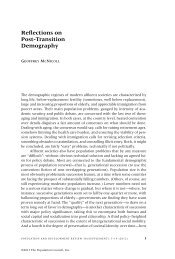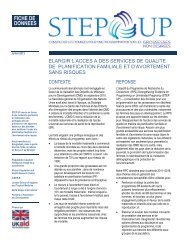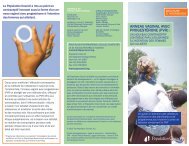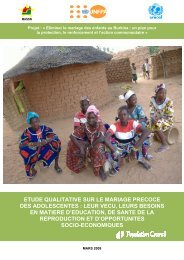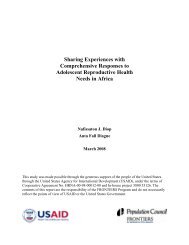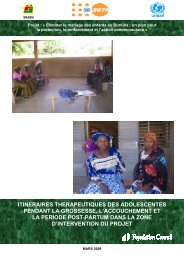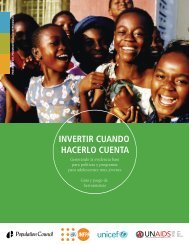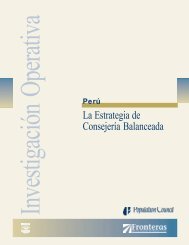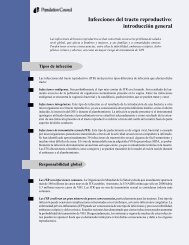Community Health Volunteer's Training Manual - Population Council
Community Health Volunteer's Training Manual - Population Council
Community Health Volunteer's Training Manual - Population Council
You also want an ePaper? Increase the reach of your titles
YUMPU automatically turns print PDFs into web optimized ePapers that Google loves.
Box 4.5.4: How to prepare and administer ORS<br />
•<br />
•<br />
•<br />
•<br />
•<br />
•<br />
•<br />
•<br />
•<br />
•<br />
•<br />
•<br />
Home Management of Minor Ailments<br />
Get a sachet of ORS<br />
Check Expiry date<br />
Get a container with lid and a spoon<br />
Wash them (the lid and spoon?) thoroughly with soap and rinse properly with water<br />
Measure one big beer bottle or 2 small fanta bottles of water from the tap or borehole<br />
and pour into a clean cup or container with a lid<br />
If water is not from tap or borehole, boil and cool it before measuring it<br />
Tear open one sachet of ORS and pour into the water in a bowl<br />
Stir with spoon to dissolve<br />
Serve in smaller quantities at frequent intervals until solution is finished<br />
Repeat any time the child frees the bowels or vomits<br />
Do not use the drink after 24 hours<br />
Breast feed child frequently if child is still on breast<br />
Topic 3 Referring clients<br />
Referral means giving direction (written or verbal) to a client for consultation or review.<br />
Here it applies to the CHVs directing patients or clients to a CHO who has the professional<br />
or technical competence. The CHV should first recognise that the sick person can no longer<br />
be treated at home. In addition, the CHV should know the process to seek further help and<br />
where the appropriate providers are located.<br />
This unit starts with a question and answer session on the type of case that a health volunteer<br />
must refer to a CHO or health facility in Exercise 4.5.3.<br />
Exercise 4.5.3 Question and<br />
Answer<br />
Objective<br />
1. To discuss type of patients/clients/<br />
diseases to refer to the CHO<br />
Questions<br />
1. What does referral mean?<br />
2. Which client or disease condition<br />
should a CHV refer to CHO?<br />
Instructions to the Facilitator<br />
1. Guide Participants in a question and<br />
answer session on referral of clients<br />
who may have social/health problems<br />
2. List responses on flip chart for<br />
discussion<br />
3. Take participants through Figure<br />
4.5.2 to 59 on Signs and Symptoms<br />
for referral by CHVs to CHOs.<br />
One group of clients who have to be referred to the nearest heath facility is the unconscious<br />
patient. Unconscious patients are not aware of their environment and do not respond to<br />
stimulation. Common conditions that cause unconsciousness in Ghana are: high fever,<br />
especially in children, malaria, epilepsy, head injury, stroke, diabetes mellitus and meningitis<br />
(infection of the brain cover). See Figure 4.5.2<br />
217



